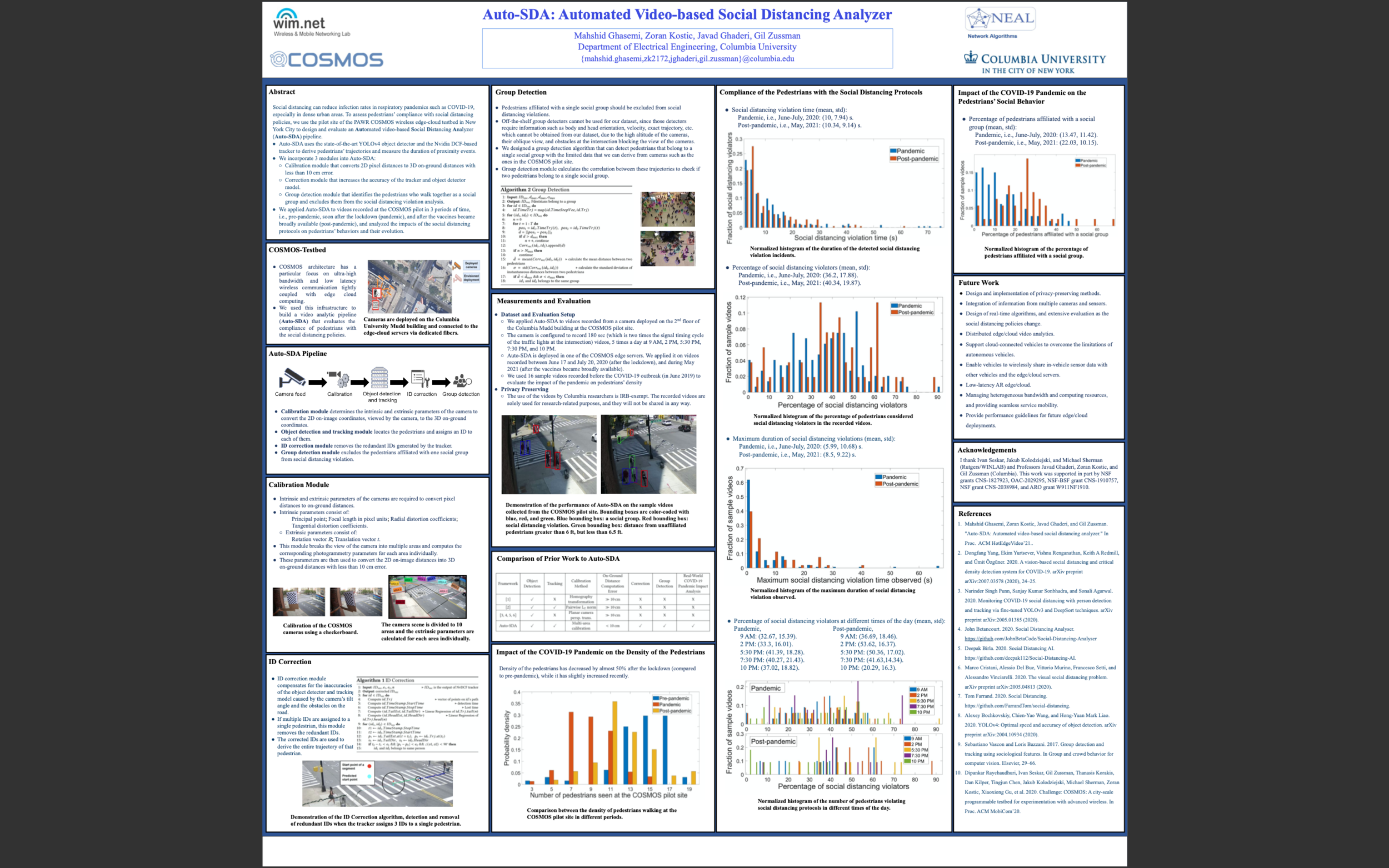Auto-SDA: Automated Video-Based Social Distancing Analyzer
Video
Team Information
Team Members
Mahshid Ghasemi, PhD Student, Department of Electrical Engineering, Columbia Engineering
Faculty Advisors:
Javad Ghaderi, Associate Professor of Electrical Engineering, Columbia Engineering
Gil Zussman, Professor of Electrical Engineering; and Vice Chair, Department of Electrical Engineering, Columbia Engineering
Zoran Kostić, Professor of Professional Practice, Department of Electrical Engineering, Columbia Engineering
Abstract
Social distancing can reduce infection rates in respiratory pandemics such as COVID-19, especially in dense urban areas. To assess pedestrians' compliance with social distancing policies, we use the pilot site of the PAWR COSMOS wireless edge-cloud testbed in New York City to design and evaluate an Automated video-based Social Distancing Analyzer (Auto-SDA) pipeline. Auto-SDA derives pedestrians' trajectories and measures the duration of close proximity events. It relies on an object detector and a tracker, however, to achieve highly accurate social distancing analysis, we design and incorporate 3 modules into Auto-SDA: (i) a calibration module that converts 2D pixel distances to 3D on-ground distances with less than 10 cm error, (ii) a correction module that identifies pedestrians who were missed or assigned duplicate IDs by the object detection-tracker and rectifies their IDs, and (iii) a group detection module that identifies affiliated pedestrians (i.e., pedestrians who walk together as a social group) and excludes them from the social distancing violation analysis. We applied Auto-SDA to videos recorded at the COSMOS pilot site before the pandemic, soon after the lockdown, and after the vaccines became broadly available, and analyzed the impacts of the social distancing protocols on pedestrians' behaviors and their evolution. For example, the analysis shows that after the lockdown, less than 55% of the pedestrians violated the social distancing protocols, whereas this percentage increased to 65% after the vaccines became available. Moreover, after the lockdown, 0-20% of the pedestrians were affiliated with a social group, compared to 10-45% once the vaccines became available. Finally, following the lockdown, the density of the pedestrians at the intersection decreased by almost 50%.
Team Lead Contact
Mahshid Ghasemi: mahshid.ghasemi@columbia.edu

